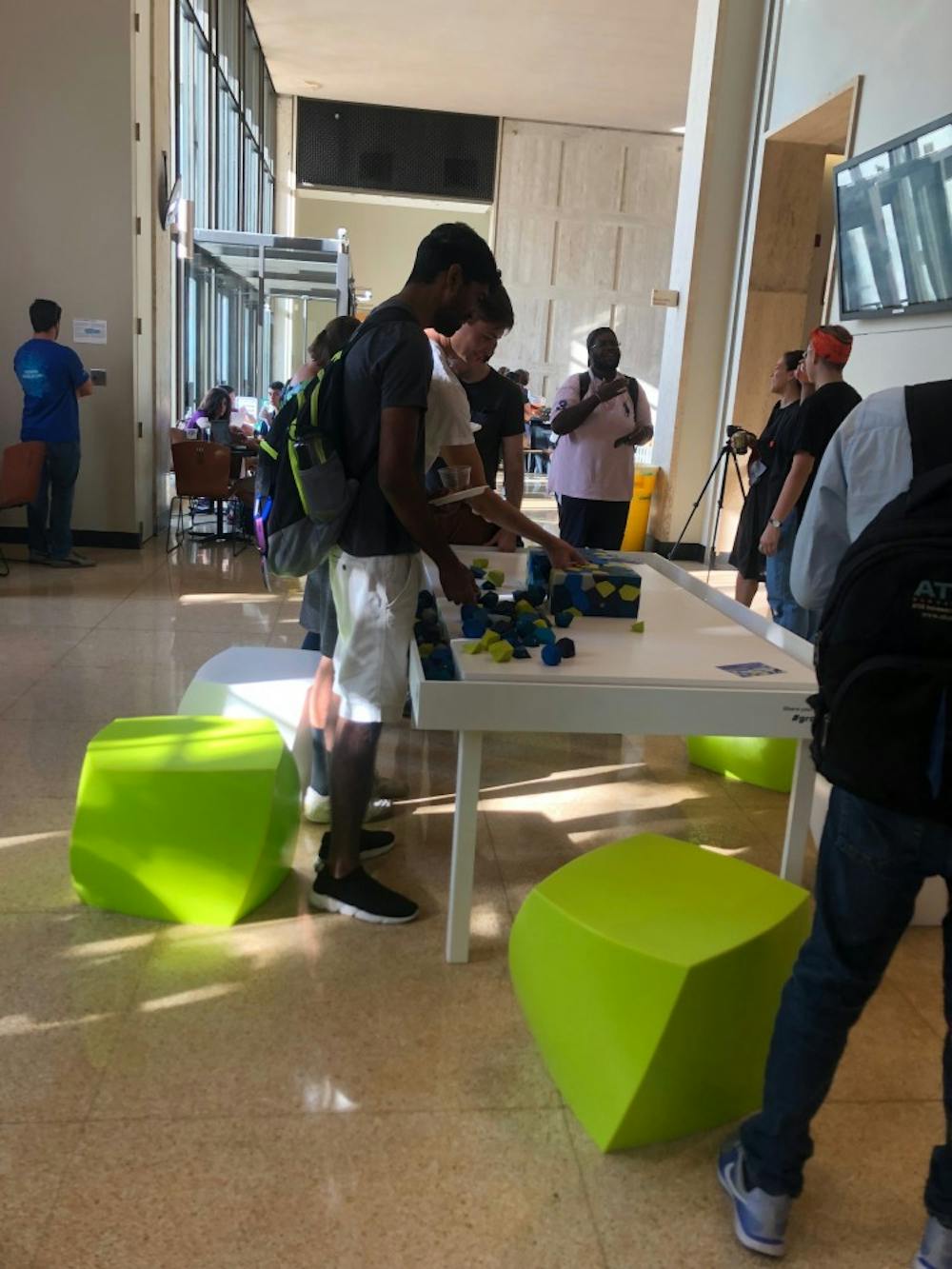A collaboration between the Hopkins Extreme Materials Institute (HEMI) and the Maryland Institute College of Art (MICA) facilitates a fusion of engineering and art, in the hopes that it will produce new perspectives to address innovative subjects. Researchers at HEMI study materials under extreme conditions, such as intense heat, strong magnetic fields and explosions and design structures that could withstand those conditions.
Professor K.T. Ramesh, Director of HEMI, explained that not all of the work done at the institute is presented to the public.
“Here we produce huge sets of data, so there comes a time when we need to decide what to look at and present,” Ramesh said.
The effort to find innovative and concise ways to visualize and convey this data led Ramesh to reach out to artists from MICA for a summer internship opportunity.
This project partners students from MICA with scientists at HEMI with a goal of exploring visual representations for HEMI scientists’ projects.
On Oct. 4, the three participants of the 2019 program presented their completed projects.
Yi Zheng, who had just completed her graduate studies, worked with Sabine Stanley, a professor from the Department of Earth and Planetary Sciences who studies planetary magnetic fields. During her internship, Zheng designed a logo for the lab and created short GIFs that showed the Luna Magma Ocean, one proposed theory for the formation of the Moon’s rock layers, and Saturn’s interior. Additionally, Zheng designed an animated video that showcases the research focuses of team members of the lab. Zheng also spoke about the possibility of uploading her productions to public platforms, since she would like her artwork to reach a broader audience who are not necessarily scientific experts.
Zheng spoke about how she found her niche in scientific illustrations when, after completing her undergraduate studies, she became acutely aware that scientists often need help with visualization.
Another participant, graduate student Mae Rowland, was interested in optics and 3D rendering before she joined the program. She had produced both physical installations and digital works that address perceptions of the human eye.
Looking to work with a wider range of optics equipment, Rowland partnered with Professor Susanna Thon from the Department of Electrical and Computer Engineering. In Thon’s lab, Rowland used argon lasers to create holograms of objects. In addition to walking the audience through technical aspects of how she had set up her work, she also shared her fascination with holography’s ability to give its viewers a perception of space.
“I learned that unlike photography, which only records the intensity and wavelength of light, holography is also able to capture the phase and amplitude of light waves, thus generating a 3D image.” Rowland said.
This realization led her to further explore the scope of computational rendering and modeling. For her summer project, Rowland used a computer program capable of producing shading on images to produce works that explored the various lighting and shadow effects.
Laila Milevski worked with Professor Thomas Gernay who leads the Multi-Hazard Resilient Structures research group in the Department of Civil Engineering. The group investigates how different materials and structures react during and after fires.
Milevski explained that she familiarized herself with the subject through observational sketches. She remarked that while she was doing sketches for team members, she noticed how heavily the research group relied on using computational methods for modeling and data analysis.
“I had my sketchbook with me to keep me busy when I’m bored, but all that the lab members did were just staring at computer screens,” Milevski said.
This prompted Milevski to wonder how she could portray the emotional aspects of losing one’s home to fires could, and she produced a stop-motion animation that addresses this issue. Milevski also created pamphlets which aimed to raise public awareness of different aspects of fire engineering.
During the presentations, both the students and faculty spoke highly of their collaboration experience.
“I was a late audience to their work, so I was very appreciative of how patient they were,” Zheng said.
Zheng confessed that when she began her internship, she expected issues with communication between her and the lab members, as they are used to talking in a professional, scientific voice.
But throughout the process, Zheng discovered that the professionals explained their works to her in easily comprehensible language. Faculty members from the labs also complimented the MICA students’ willingness to learn and eagerness to experiment even while entering a very unfamiliar field. Professor Natalia Drichko, co-advisor to Rowland, commented on her eagerness.
“When Mae entered the lab she was immediately ready to get her hands on the equipment. I would say she is even braver at trying out new things than my graduate students,” Drichko said.
In addition to the summer program, the collaboration also resulted in an installation by artist Jenna Frye on the Q-level of the library, which will be on view until Jan. 10, 2020.
The installation comprises a complex 3D puzzle made up of numerous unique, individual pieces and is intended to be completed by people’s collective efforts.
This collaboration between HEMI and MICA brings together disciplines that are not often thought to go hand in hand.





